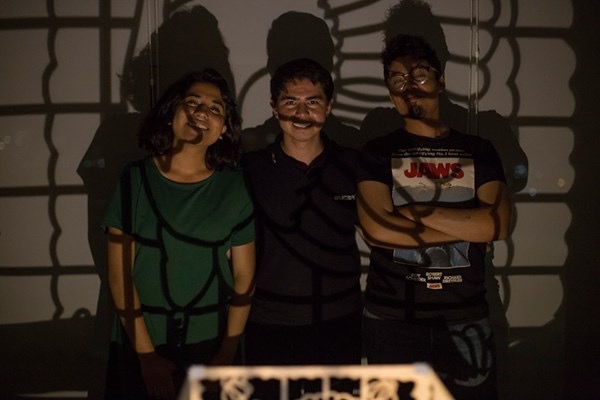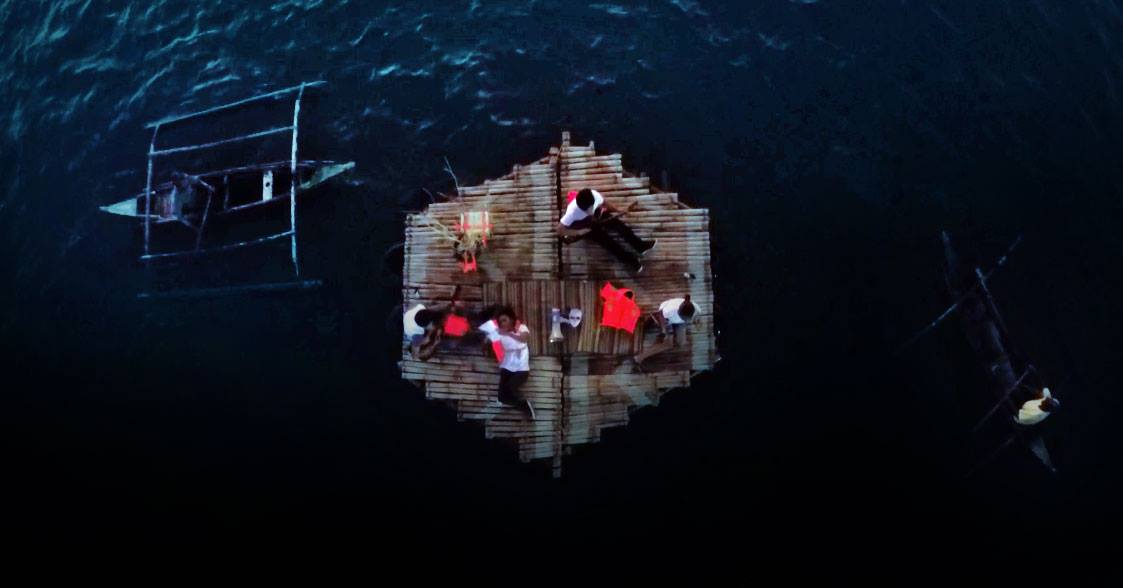Open house for “Lima 2100: Collective Resilience through Adaptive Urbanism” in the virtual Museo de Arte Contemporáneo (MAC Lima) gallery, created and curated by Gabriel Kaprielian exhibiting work of American Arts Incubator — Peru artists (2020).
It’s been a little over a month since the American Arts Incubator — Peru (AAI Peru) program was completed. Reflecting back on the month-long exchange, the global pandemic and virtual format did not dampen the enthusiasm and brilliance of the participating artists. Instead, it challenged us to adapt and respond to the moment, framed by the past, while projecting onto the future. Meaningful connections were made, ideas and knowledge were shared, and amazing new artwork was created. By all accounts, the program was a huge success! Thanks to the dedication of many wonderful people that made this possible.
I led four workshops that introduced technology platforms, theoretical frameworks, encouraged discussion, and led to short exercises applying these tools with artists' ideas. Workshop 1 involved a collective “Psycho-geographic Mapping” of Lima using a virtual whiteboard canvas. In Workshop 2, artists created “Postcards from the Future” that showcased speculative visions of Lima in the year 2100. Workshop 3 introduced tools for digital 3D modeling to create a collaborative “Monument to the Pandemic.” Workshop 4 demonstrated the use of augmented and virtual reality to visualize the artists' work.
There were two guest speaker panels that introduced further discussion on the social challenge of urban development in Lima, focusing on the themes of climate change, social equity, and urban health. The first panel was centered around public space and included Dr. Patricia Kim (Monument Lab), Dr. Ghigo DiTommaso (Gehl Architects), and Lucía Nogales (Ocupa tu Calle). The second panel focused on socially-responsive artwork and included Nicolas Gomez Echeverri (MAC Lima), Natalija Boljsakov (UTEC), Ferran Gisbert (UTEC), and Kiko Mayorga (UTEC).
For the last ten days of the program, each artist created new artwork responding to the theme, “Lima 2100 – Collective Resilience through Adaptive Urbanism.” These works took the form of 2D collage, audio and video, and digital 3D forms. I was amazed by the creativity and thoughtfulness of each project and the passion each artist demonstrated in developing their work in such a short amount of time.
Artists presented their artworks and concepts to a guest panel where they received outside feedback. The final exhibition was originally planned to take place in the Museo de Arte Contemporáneo (MAC Lima). Instead, we created a virtual reality gallery in Mozilla Hubs of MAC Lima with a curated exhibition of each artist’s work. This was the first time we were able to gather in the same "room," walking around and chatting, viewing the artwork as a collective project.
I want to give a big thank you to all of the participating artists, our partners in Lima including UTEC, MAC Lima, and the U.S. Embassy, as well as our guest speakers and panelists. This program has introduced new ideas and understanding in my creative practice and expanded my ecosystem of collaborators. I am grateful for the opportunity to have taken part in AAI Peru.
by João Henrique Motta (photographer, trained journalist and artist-in-the-making via AAI Brazil)
*Leia a postagem do blog em português / Read the blog in Portuguese
On the night of Thursday, March 12, 2020, American artist Santiago X exhibited a video of his piece, "ATICINTOLOCA: Man and The Black Snake” to a full auditorium at the Banco do Brasil Cultural Center in Belo Horizonte (CCBB BH). The performance of the indigenous-futurist artist, born to the Kossati and Chamoru nations, recreated the experience of the formation of mountains from a projection of contour lines in mixed reality: the digital and the physical. We immediately identified with the topography as inhabitants of a country full of mountains.
Santiago X, or Santi, was the mentor who guided about 20 Brazilian artists, gathered in Belo Horizonte, to participate in the international digital arts exchange program, American Arts Incubator - Brazil (AAI). It was Santi's first time in Brazil, and the residency experience was divided into two parts by an unexpected historical moment of our century: the dawn of the new coronavirus pandemic.
The work that Santiago presented to us during that meeting was a reference to the myth of the creation of the mountains in the territory of his people. As he used his hands to move mounds of sand inside a box, a projection drew new landscapes, adding peaks, depressions, plains and mountains. The green, blue, red and yellow, colors characteristic of this type of map, colored the image throughout the time that he stirred his work. It was possible to perceive, then, the importance of the element "earth" within the artist's work. A westernized conception could certainly be limited to the geological characteristics of the soil. But in the eyes of those who have a deeper relationship with the nature of a place and the land itself, it was impressive to witness the materialization of a worldview being activated by means of technological devices.
At the time, I remember asking Santiago about when or how he incorporated the term “indigenous futurism” into his work, and he said something along the lines of: “My relationship with futurism is to rescue the connection with my land (earth) and with the knowledge of my ancestors, to tell our stories from art. I continue to tell stories about the life and memory of my people, also in augmented reality.”
In his production, the artist uses multiple platforms to bring ideas to life and to establish connections with other people. It was not by chance, that same night, that the presence of a group of students from the UFMG Landscaping course contributed to a very genuine approach to the occasion: to know and hear Santiago's words. I also needed to hear it and get to know it. It was beautiful, and there I felt that the residence would be a fertile experience to question almost everything.
After the opening of AAI, some people went to a bar near the cultural center to celebrate the opening. Sandro (Santiago X’s assistant), some production professionals and a group of participants, among them the architects Roberta Silvestre, Kyvia Salles and myself. We didn't know it yet, but we would later form a working group together - Group 4.
Together, we toasted, drank and ate.
THE FIRST PART
The first meeting with all the workshop participants took place the following weekend. First, we introduced ourselves and shared the objects we wanted to create in a world of immersive reality. It was intense.
We then took the first steps with the tools we would use to create group installations for an exhibition in one of the rooms at CCBB BH. A discussion on the concept of “reality” introduced the points of focus that we should consider in our future work: economic inequality and protection of the environment.
In the last five years alone, the territory of Minas Gerais has suffered two of the most serious environmental crimes in the world: the rupture of the Samarco and Vale dams, which destroyed many lives in Bento Rodrigues and Brumadinho, generating consecutive tragedies and successive violations of life for families and entire cities.
However, the Friday after the first weekend of workshops, Belo Horizonte joined the long list of cities in the world in which city officials decreed the closure of commerce and instructed people to stay at home, following health recommendations from experts.
At first, the conversation was about washing your hands. With the interruption of the activities of the CCBB, American Arts Incubator was postponed.
THE WORLD IN QUARANTINE
In Italy, there were 700 deaths a day. Almost a thousand people per day, dying in a country where all the civilizing myths of the political, economic and health systems seemed to have stuck to reason. But not everything is as it seems. Then, the British prime minister, who had been a denialist regarding the global transmission of the disease, contracted COVID-19.
Closing borders, closing establishments, closing houses. The world was emptying, and the European continent was the new epicenter of the disease. The material world had been contaminated. And the pandemic, following its natural course, started plaguing our continent: South America.
I called my friends. For a long time, I will remember that day. And also those solitary numbers. 15 dead. It was Saturday. After a few days, the scenario of the pandemic would be like that of a horror movie: cemeteries full of people wearing plastic paraphernalia to contain the transmission of the virus.
Those who could, stayed at home. Some still left. Others insisted on promoting gatherings. Most still needed to buy food, and for that, they needed to be out. Not everyone could protect themselves from this violent wave.
Are we still in shock? Or did we get used to the shock? Did it already pass? What is happening? Deaths increased and continue to increase.
How did we possibly get here? Did we make mistakes? We must have. How do we fix them? Here below the Equator, imagining any possibility of the future is flirting with the surreal.
"Where did we come from? Where are we going? Do these questions matter now?”
This is the initial message of "HABITAR (DWELL)," a collective work that results from a collaboration between the architects Roberta Silvestre and Kyvia Salles, and me, João Henrique Motta, a journalist. The provocations of the work seek to offer questions about reality - and also about the possibility of creating futures.
The collective experience we shared was guided by a very particular process of matching ideas between the group. We listened, stopped, talked and decided together on what to create. From analyzing how our skills complemented each other, we reached a consensus and finally began utilizing visual and digital tools, as well as developing concepts and narratives.
When JA.CA communicated by e-mail about the possibility of restarting the residency, now in a virtual way, respecting sanitary rules and preventing crowding, that was reason enough to cheer us up in a quarantine full of uncertainties, and also infinite possibilities to stimulate artistic thinking.
Focusing on the themes that would be part of this experience, economic inequality and environmentalism, allowed us to consolidate aspects that united the propositional and narrative interests of our large group. Valuing the protection of nature and telling the stories of its guardians was one of the fires that brought us together to tell stories, ask questions and imagine futures.
Mining is undoubtedly a scar that for years has made this land bleed, year after year, in an exploitative regime that depletes mountains, forests and rivers, terrorizes cities and interferes with the way of life of so many people. And impunity makes our reality even more cruel. This exploitation would be at the center of our criticism. Brumadinho and Bento Rodrigues can never be forgotten.
Other environmental crimes that have successively occurred in recent months have also added to our chorus of warnings: criminal fires from north to south, tons of oil off the coast of the Northeast, invasion of indigenous lands by illegal mining, floods and landslides in the cities. In addition, we have a state authority that arms itself and declares an explicit war on alternative lifestyles to hegemonic capitalism, as I will discuss later.
Defending the environment is defending the constellations of ways of life and the stories that make up our trajectory: the indigenous peoples of Brazil, the black population, the poor population, the traditional communities — everyone who lives on the margins of “humanity.” Respecting these stories is fundamental to the message we seek to learn and convey.
In early May, we met again on the Zoom platform. Santiago in Chicago, and us in Belo Horizonte. Later, we met with panelist João Souza, creator of the NGO Favela, to comment on the exhibition resulting from the residency, aiming to continue the group activities. That was one of the most vital points of this process: an opportunity to dialogue with someone who encouraged us to further sharpen the critical dimension of our projects and helped us look directly into the eyes of the inequalities that make up Brazil's economic and political structures.
Finally, Santiago X decided that the virtual exhibition of the AAI would be called "PORTAL."
UNLOCKING
“Natural resources for what? Sustainable development for whom?” asks Ailton Krenak, in the book, Ideas to postpone the end of the world (Companhia das Letras, 2019).
Save what, if the land gives us everything? How can there be a lack, if the forest is the symbol of abundance and diversity? For the indigenous peoples of Brazil, ancestral territory is sacred. Nature is the greatest wealth, and it cannot be violated for the advantage of the violent.
"HABITAR (DWELL)" is based on a poetic reading of the books of the writer, activist, indigenous leader and one of the founders of the Union of Indigenous Nations (UNI), Ailton Krenak, and also of the poem "Triste Horizonte" (1976) by Carlos Drummond de Andrade (1902-1987). This work was created with architectural tools, digital modeling, music, soundscapes, poetry, literature, photography, 360º videos and other virtual reality technologies.
Freely interpreted, Krenak's words echo in our work, allowing us to imagine realities, mix cosmos and materialize our dreams in the virtual world. The author emerged as a common reference to all participants in the AAI residency program, both because of the revolutionary power of his ideas towards the decolonization of the gaze as well as the combativeness inherent in his words.
Our concern, then, starts to be deconstructed to the same extent that we approach art from the advice of Santiago and Krenak. Santiago pointed out two fundamental points for thinking about our worlds: "abstracting" and "healing." It was these terms that drove us and allowed us to have such honest exchanges about expectations around our work.
The forest is a gift from our ancestors, who planted it as a garden. It is not, therefore, a random cosmic phenomenon, dependent on something like the alignment of the stars and the expansion of matter, but rather on the historical action of human groups in tune with the entities that live there. These and other indigenous wisdoms have expanded our imagination for this work.
Working with a digital platform of scenic architecture and scene description, while still having the possibility of conducting experiences of other natures, filled us with a feeling inherent in artistic enjoyment: inventing. And we invented everything: first, paper; then, the cards, the photos, the collages and the slides.
A continent plagued by environmental problems, an empty city, but still noisy. A world in the process of reforestation and a community in celebration. Everything perfectly transfigured for the virtual atmosphere, for the internet.
VIRTUAL RECREATION
It all happened by combining the skills and reflections of three young artists from Minas Gerais who borrowed the words and ideas of others, among them classical and contemporary thinkers.
When we imagined the experience, placing the work in a virtual reality universe like Mozilla Hubs (which at the time we knew little about), we believed anything would be possible. We imagined worlds that would have videos as a ceiling, 360º footage as satellites, poetry echoing in space, and nature continuing to provide life in the environments. A biological and spiritual experience of reforestation. And this is what "HABITAR" became.
That would be our contemplation for a world that seeks healing. This was the genesis envisioned by three artists from Belo Horizonte: a world that interconnects different pasts, presents and futures.
KNENAK MEANS “HEAD OF THE EARTH”
Mr. Ailton is a political and revolutionary leader, who at different times in his life, actively participated in the consolidation of the political and subjective rights of indigenous nations in Brazil. In his most recent books, he talked about his land, near the Rio Doce ("Watu") and about dreams.
Along with “his generation,” he was one of the founders of the Union of Indigenous Nations (UNI) in 1979. Created from the union of several activists, the organization has been responsible for the unification of the struggles of indigenous peoples who have been fighting colonization since 1500. He also participated in the Alliance of the Peoples of the Forest, in 1987, alongside Chico Mendes, activist, rubber tapper and protector of the Amazon Forest. Both Mendes and Krenak are Brazilians who inspire the work of other activists around the world.
The extractive period idealized in the years leading up to the debates on the rights and guarantees of the peoples of the forests would be a solution against the landowning capital that destroyed and destroys the Amazon. Hundreds of families of rubber tappers gave up hectares, “plots” of land in the Amazon biome in order to take care of the tropical forest, joining the struggle of indigenous peoples for the protection of their sacred territories.
For the world of CPFs (Natural Persons Register) and CNPJs (National Registry of Legal Entities), what was at stake was the autonomy of the constitutional law on land. After all, if a certain right is in the Constitution, it needs to be guaranteed. But there is no word in Portuguese or Federal Law that translates an individual's relationship with his birthplace, with the meaning it has for an indigenous person or for a rubber tapper like Chico Mendes. The self-protection of forests by the communities that resist there, creating opportunities where humans respect all other beings, living in balance, is also an experience that we try to express in our work. Chico Mendes was murdered in his backyard within a year in which the new constitutional laws of “redemocratization” were starting to be debated. The legacy of his struggle lives in the daily life of exploited communities and among his companions.
What has happened, in practice, is that the Brazilian State has committed itself to giving total individual and collective protection to the indigenous territories, as well as promising the demarcations soon after. They also promised the same nations things that no other westernized nation can guarantee to the other: peace. Something white folks promise. Indigenous peoples were considered Brazilian and their rights and guarantees would be protected by law - for the first time since the invasion of their territories. As usual, these achievements and milestones remain on the alert, resisting the destructive power of capital. More than ever, the state is declaring a war against nature. The difference is that today, in the head of the (anti) Minister of the Environment, this is the final battle. "A land where nothing can be sold":
These ways of life, propositions of universes and alliances, are political experiences of resistance in our territory that also helped us to imagine the expressions proposed in "HABITAR." According to the photographer and ethnographer Edgar Kanaykó, from the Xacriabá nation, it would be necessary to “indigenize the screens,” “indigenize the knowledge production processes.” In his view, this would be a process that comes from the inside out, from increasingly powerful subjectivities, forming a more powerful collective. As we respect the complexities of these constellations of subjectivities, sharing respect and cultivating care becomes easier.
INVASION
The racial issues unresolved by Brazil and the USA are the reasons for our problems, deficiencies and inequalities. For centuries, the proclamation of whiteness has been a cancer for humans. The assertion of a fictitious superior quality based on skin color is a declaration of war against non-whites. The proclamation of a superiority that decimates entire universes, based on the cruel imposition of a single way of life based on accumulation, competition and the standardization of existence.
Decolonizing is necessary at all borders: in health, education, security and also in the arts. Only then would it be possible to conceive the preservation of diversity as the real meaning of our existences, individual and collective.
We speak of an enemy that has no form, but exercises the power to kill, invade and destroy. Colonialism can be presented in several ways, but perhaps the best way to say it here is to point to structural racism and the distractions that this system creates with the intention of alienating us from the earth, dissociating us as organisms integrated into this planet, to separate us from this possibility of joint existence: on the one hand, humans, on the other, nature. But "everything is nature.”
In Brazil, they are killed with unique impunity. And the non-white population of this "piece" of land for more than 500 years, called America, is killed with unique impunity. In this sense, another reflection that we extract from Krenak is the idea that, if some are treated as second-class citizens, we do not, in fact, form a humanity. Blacks, indigenous people, ciganos, the poor and caiçaras do not enjoy the same “guarantees” as a white person - that is a fact.
Communities that offer us life practices and conceptions of different worlds from the hegemonic system have always been in the crosshairs of colonization. Centuries later, continuing to learn the forms of resistance of these traditional communities should be a political gesture of respect and reverence. Especially in a country where all material relations are the product of enslavement. “Our world” was built on top of indigenous cemeteries and built with the sweat and blood of African peoples, abducted from their ancestral territories.
The experience that our group created corresponds with a universe arranged on a virtual reality platform, in which each participant can visit four different planets and choose, at the end, the one he would like to inhabit. It is an invitation to rethink the past, reflect on the present and imagine the future. Kyvia and Roberta are brilliant architects. They created the old cities of a real world and our inventions.
At this point, we had an idea: the great human mission should be to preserve the knowledge that connects us with life on this planet. But how can we do this if we are not a humanity? If all inequalities point to an unequal humanity? There can be no peace if some are treated as targets.
BELO HORIZONTE AND THE MOUNTAIN
The poem “Triste Horizonte” (“Sorrowful Horizon”) by Carlos Drummond de Andrade is the basis of another narrative configured in the past-future-present. During the coronavirus pandemic period, it is impossible not to approach everything that art offers us in the context of distance, lockdown, isolation, quarantine and such.
The poet's verses were written in 1976, in the city of Rio de Janeiro, where he lived until his death in 1987. According to a report by the artist, the poem was inspired by a news story about security forces that barred climbing and hiking in the Serra do Curral. The sad farewell to Belo Horizonte moves us from the melancholic look at the destruction of the same mountain range by MBR, a mining company that was exploiting the mountain at that time. It is a process that has exhausted the same mountains for decades and, thus, also destroyed a living part of the mining people. From time to time, after all, ore price crises disturb the fullness of our mountains.
Mining has left cruel marks in the country for centuries, and in the last five years, two environmental crimes in Minas Gerais, involving one of the largest companies in the world, have revealed an even more cruel face of successive violations of rights in this type of crime. Environmental crime.
Looking at Belo Horizonte as still provincial, but a “stage of the new arts,” is another interesting point of the same poem. This point connects us to the current moment of cultural profusion in the city, as well as to a generation that seeks the real infusion of diversity in the cultural melting pot of the urban environment. Excerpts from the writer Paulo Eduardo Correa, a key figure in hip hop from Minas Gerais, and a song by the rapper Djonga contribute, finally, to critically fill the work, helping us to propose dialogues with different social realities.
Belo Horizonte is a Brazilian city with many social and environmental problems. A city that grew during the blossoming of contradictions inherent to the formation of our country. Belo Horizonte is a promise, like all other capitals. It's a mystery. "Provincial,” "an egg," “has that hill": Belo Horizonte, that darling, a city that only the natives themselves can complain about.
Among its social and environmental problems, we seek to address mainly two: 1) the destruction of nature and the landscape of this place by mining companies, associated with the interests of capital that devastate our mountains and rivers throughout the state; and 2) the social and racial inequality that, although stark, is totally invisible on the streets of urban centers, where we have the greatest concentration of economic disparities and the State perpetuates a continuous genocide against the black and poor population.
From the beginning, the program’s proposal invited us to leave our own comfort zones, reflecting on the different realities that we experience daily. For a while, I, who was able to stay at home during the quarantine, thought: “everything must be different outside.” But no: nothing has changed - and nothing is normal. There is no normal, and there can be no normal in a reality in which the relationships of life are based mainly on experiences of accumulation, consumption, segregation and continued violence.
This unrest took our group to the streets of Belo Horizonte in the middle of a pandemic. Due care was taken to avoid contamination and transmission of the virus during all our excursions through the streets - not empty - of the hypercenter of the capital of Minas Gerais.
The city was functioning as if there were no measures of restriction and distance. To understand this situation, it is necessary to review all centuries of Brazilian history, but the point to which we would return is the same: privileges of some and lack of access to basic conditions for many. Amidst this scenario, rhetoric about meritocracy still flourishes. There is definitely, in addition to many others, an interpretive crisis in this country.
When we received our tech kits through the program, we went to record the streets to create our current world. Bring the images of our territory, our city, this falling land, to our virtual world. A look at the present to make our future possible.
EXPERIENCE: HABITAR
Imagine moving through a mystical universe, being able to view, run and fly through different spaces. You cannot touch anything, you cannot carry anything and you cannot take anything. You can run, fly, walk, listen, see, take pictures and stay still.
The importance of the experience was being able to tell stories around a “cold fire.” I heard this expression in a conversation between Edgar Xakriabá, photographer and indigenous activist, and Ailton Krenak on Instagram. They spoke of the present moment, filming a sunset in the landscape of their villages during a “live” session.
We now have the ability to meet with "friends" around a "cold fire.” A technology that our ancestors invented to feed us and to help us communicate better, share stories and create emotional bonds.
We have been affected by many stories during this period of the pandemic. I think we all tried to invent universes and possibilities for creation, through art and technology, that proposed reflections beyond reality. They are reflections on the future and on the conditions of inequality pulsating in our society, which cannot be normalized into a pacified “human condition.”
“How can the representation of possible worlds be made by the multiple subjectivities that compose it? How can we integrate the responsibility of co-creators into these narratives? In the perfect condition, we propose a game. We are offering a determining choice: to choose the planet you want to inhabit. What would you do?"
“PORTAL” is Santiago's proposal for four heterogeneous groups of artists, who until March were concentrated in Belo Horizonte and surrounding regions, then had to retreat to their homes during the pandemic. Within its limitations and possibilities, four of the most beautiful works of art I have ever seen were born. Retomada (Resumption), Aguapé and Zona de Segurança (Safety Zone) are worth special contemplation.
In any case, this work made us build portals between our worlds, our homes and our subjectivities, in the midst of a period of social isolation. It was a call to reflect on this collective existence in the midst of all the uncertainties and perpetuated violence, further accentuated by the mourning of the fallen. In collective mourning, we found a way to express ourselves.
The collective imagination of social and environmental tragedies is part of our history and allows us to be courageous and inventive. All the members of this program made their work a message about the dignity that we want to see for all "others" - and not just for "us."
All projects used cutting-edge technologies for the creation of the works. This, in itself, already offered us a “new” experience. But “PORTAL still depends on primordial knowledge: the integration of the individual with nature as disruptive ways to think about life.
Stop and look at the past, let’s learn all over again from those who were always teaching us. How will we create the future? Will we do it together?
All AAI Brazil projects can be experienced at www.aaibrazil.com
The entirety of this experience, from beginning to end, is something I will cherish and continue to be inspired by as I go forward in my art practice. From the relationships forged on the ground to my amazement of the vision and voices of the participants, and for our entire team’s resilience and creative pivoting in response to the pandemic, I am forever grateful.
When I arrived in Belo Horizonte, there was a charge in the air. It was something that was hard to pin down in the moment; it felt like a fire inside. After talking with people, learning their stories and their struggles, as well as their similarities to people I knew back home, the urgency to amplify the humanity in our shared experience burnt in me like a beacon. Whatever was to be created in this short time we had together had to transcend convention, and inject a much-needed narrative into the often cold landscape of art and technology — breathing life into it.
There were a lot of meaningful exchanges and experiences along this journey, but the ones that really stood out to me were the events that inspired us to create portals for healing — and to witness the participants embrace and overcome the challenges of creating team-based virtual experiences while in physical isolation.
Upon my arrival in Belo Horizonte, Francisca of our host partner JA.CA, took me to the opening of a new exhibition entitled "VAIVÉM," which showcased the work of Indigenous Brazilian artists and the narrative of the hammock.
There, I met an Indigenous artist and healer named, Iba, who sang traditional healing songs and linked those songs to the murals he had painted on the walls. I talked with him in my native language and he talked in his; we were laughing at the similarities in our creation stories and symbologies, and he told me his work was entirely about building gateways for healing, or portals. We laughed again, because that is exactly what my practice was/is and what I wanted to create during the incubator.
Needless to say, the participants took every tool and every opportunity that was presented to them to tell their stories, and they delivered. Watching their rapid progression from learning 3D scanning, projection mapping, augmented reality, and finally virtual reality, was simply incredible.
The teams' abilities to seamlessly incorporate these tools into a very human experience on a completely unfamiliar platform was beyond anything I could have expected. When it was all said and done, we augmented a new, uncharted digital landscape with reality and humanity. Life was breathed into each project — life that will outlive our own.
American Arts Incubator — Colombia, entitled "Laboratorio en las Fronteras," brought together a group of 28 visual artists, filmmakers, creative producers, musicians, educators, and social advocates to explore migration and identity in the context of the Colombia/Venezuela border crisis.
Just as I was about to begin a journey to Barranquilla to lead the lab in person, the world went on lockdown due to COVID-19, and the program went virtual. Through a series of online workshops exploring personal narrative and documentary, interactive media, emerging technologies, social practice, and public art – we co-created a plan for a web-based virtual museum where the work could be shared and experienced by a global audience.
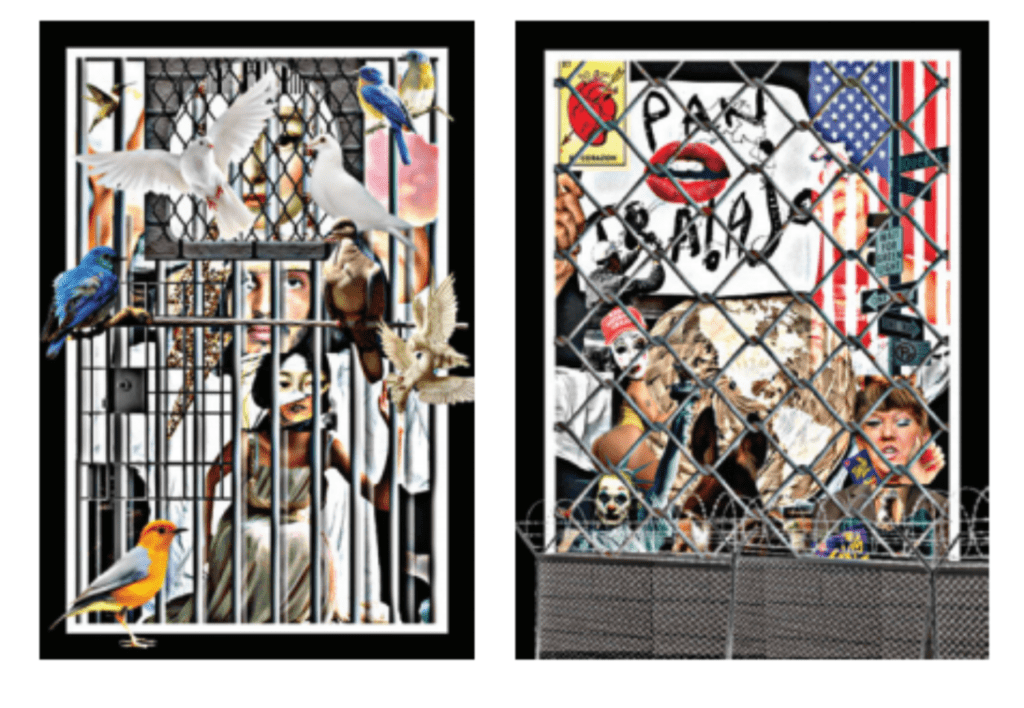
Each project is designed specifically for the virtual gallery we created, and also exists in the world as the creative expression of an independent artist attempting to survive the pandemic. In the Lab, the barriers we faced and the boundaries we crossed became part of work. The stories embedded in the virtual gallery reflect the powerful lived experiences of the participants at this unique moment in time.
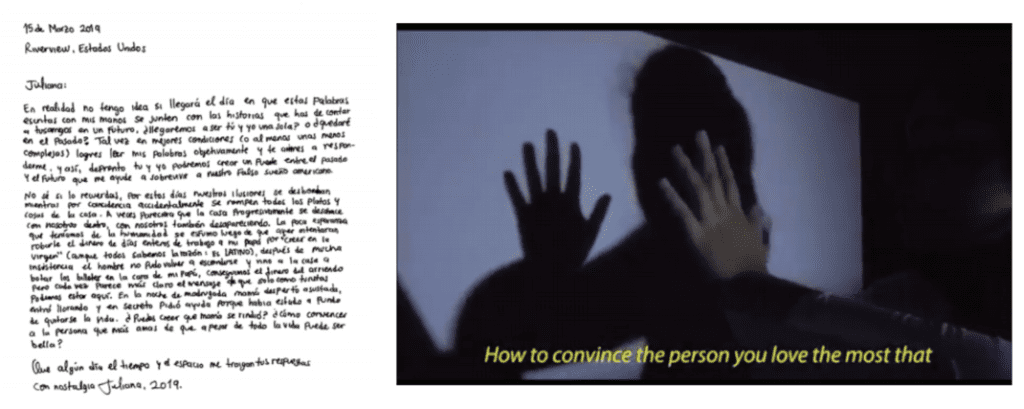
Four themes emerged from weeks of discussion that the artists chose to organize their work in the galleries: Fragments, Refuge, Reconfiguration of Identity, and Movement/Stillness. The projects included powerful stories of survival using photography, 3D modeling, poetry, single channel video, music, collage, augmented reality, and documentary.
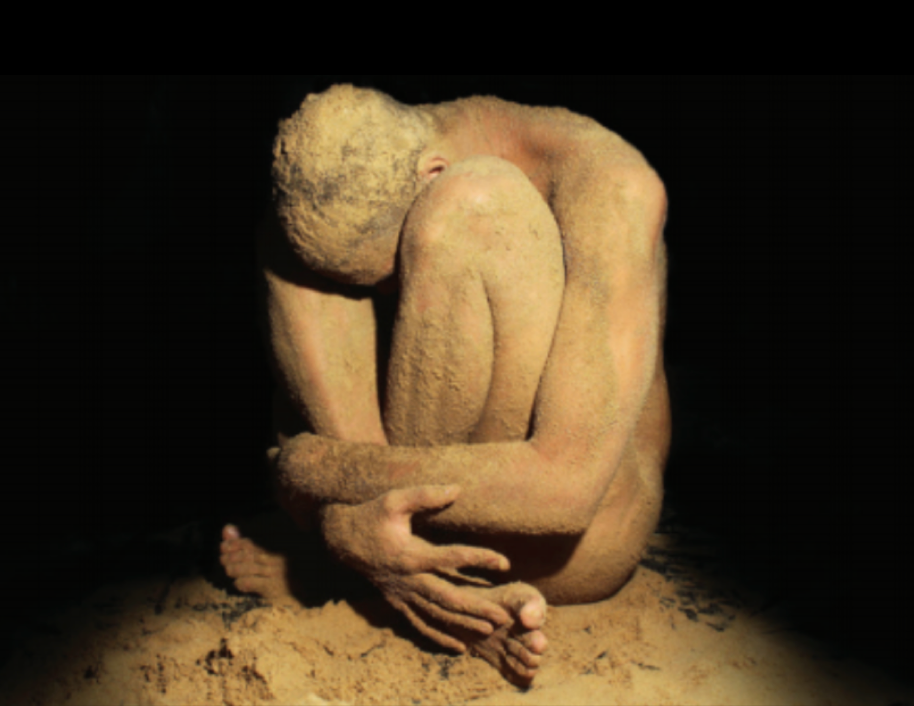
At first, the artists were hesitant to draw on their own lives for inspiration; they had wanted to use the opportunity of American Arts Incubator to work with communities at the border — to amplify their stories and raise awareness of a human rights crisis that was disappearing in the crush of coverage of the pandemic. Through the work of the Lab, the artists bravely centered their own life experiences instead and found their voices in a single phrase: we are all Migrants.
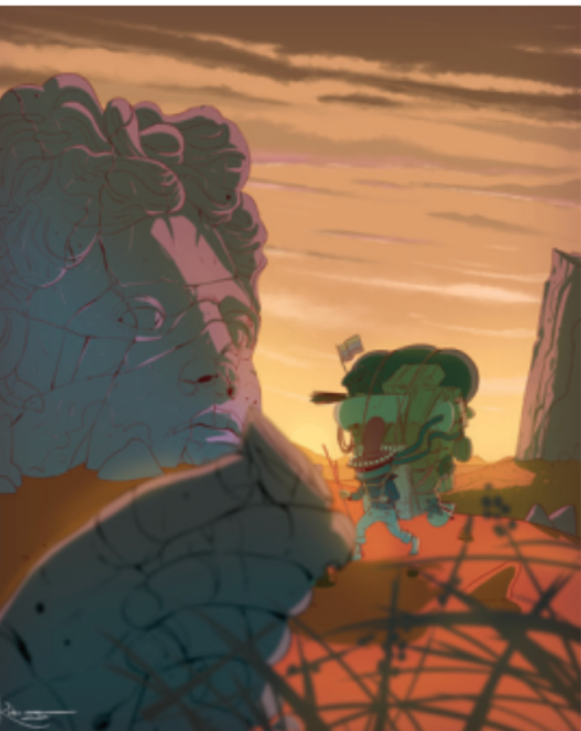
As we reimagine what our global future will look like through this darkness, I am grateful for the time I got to spend with this incredible community of artists who showed up online together for a month, hours at a time, and worked on projects alone in their homes, through quarantine, rolling blackouts, curfews, and extraordinary heat. We are all looking forward to the time when we can move the work from the virtual galleries into the streets, and into the world. Explore the virtual museum here.
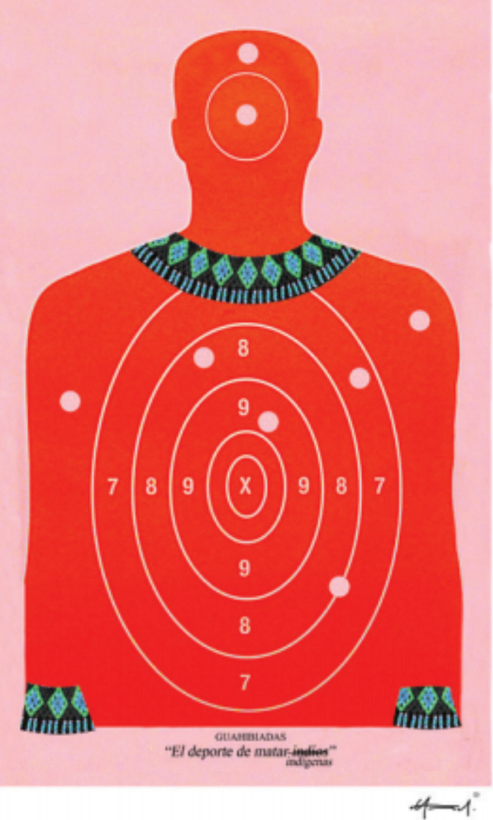
I was really looking forward to spending time in Kyiv, Ukraine this past April, but my plans were thrown for a loop by the COVID-19 pandemic. With great assistance from ZERO1, I pivoted in the short space of two weeks to a fully online experience. It was also fortunate that my incubator topic was art and artificial intelligence, which meant it could be conducted mostly through digital means.
Still, that meant that I would be holding the workshop in two languages, sometimes with a professional interpreter, and sometimes not, across a seven-hour time difference.

After giving my artist talk in conjunction with Bryan Furman from the Cultural Affairs Office at the U.S. Embassy in Kyiv, I spent one session entirely online getting to know my two dozen or so Ukrainian artists, scattered throughout the country in strict lockdown inside their homes.
My on-the-ground host collaborator in Kyiv was IZOLYATSIA, Platform For Cultural Initiatives, originally based in Donetsk. I was assisted by Mykhailo Glubokyi (Misha) and Oleksandra Khalepa (Sasha).
The selected artists for the incubator were VJs, visual artists, graphic designers, programmers, engineers, musicians, sound designers, and individuals adept at working in virtual reality. Save for one participant though, no one had fully worked with machine learning before, which is the fundamental aspect of artificial intelligence.
Over the course of three days, I showcased some of the fundamentals of machine learning through art via Zoom sessions. At the same time participants were engaging in the lectures, they began posting their ideas for team projects asynchronously in Slack.
At the end of the three days, we met online and went over every artist's project idea until settling on four themes: 'Conspirology,' Environmental and Moral Responsibility, Isolation and Connectedness, and Mudra — a translation tool for Ukrainian sign language.
For the next two weeks, we dove into into accelerated development. I met with each team in Zoom from my house in New York City, as the participants were scattered throughout Ukraine.

We had only one day of presentation rehearsal to show the final works-in-process to an international panel of AI and art experts for feedback: Arif Khan of Alethea.ai, Misha Libman of Snark Art, Gene Kogan of Abraham.ai, and Vanessa Chang, a well-known San Francisco based curator.
What really surprised me was the relative ease and speed at which the artists, who had not known one another previously, were able to adapt to forming collaborative teams that used accelerated development tools. They were able to develop coherent and plausible proof-of-concept designs.
We have now concluded the initial phase of the exchange, but some of us hope to continue by forming a media arts alliance between the Baltics and Ukraine. We have a meeting scheduled for early June, and I am already looking forward to the results.
People in social distancing circles at San Francisco's Dolores Park amid the coronavirus outbreak on June 9, 2020. Photo by Lynn Friedman is licensed under CC BY-NC-ND 2.0.
The recent global pandemic has disrupted all of our lives, while highlighting a myriad of “wicked problems” facing cities. In just a matter of months, cities look and feel different. For many, we are looking at them out our window or within the small perimeter in our neighborhood. The isolation during shelter-in-place has shed light on the importance of community and public space in all of our lives.
This is a time for collective resilience.
As I will not be traveling to Peru physically, I’ve been working on adapting the exchange to a remote platform that utilizes technology for collaborative engagement through virtual and augmented reality environments. It has been challenging to re-envision a program focused on the social challenge of urban development in public space during a time of quarantines and web-based communication. However, I am optimistic about the potential for reframing these challenges as opportunities for creative exploration with the American Arts Incubator participant cohort in Lima.
During the past few months, I have been reflecting on the implications of the pandemic on the way cities are used and how they are designed. In a way, the pandemic affords us time to contemplate the present conditions and envision a better future for our cities. I’m interested in how art + technology can be leveraged to inspire collective optimism and enable participatory urbanism.
In my own creative practice, I have explored ways to contextualize and make visible the past, present, and potential futures of cities. This often involves mapping to visualize a geo-spatial and layered place narrative. I look forward to learning more about Lima from the selected group of interdisciplinary artists through their personal psycho-geography of the city and speculative vision of what the city could be. If we traveled to Lima in the year 2100, what might we write back about how the city and world has changed?
In recent years, I’ve been especially interested in interactive and participatory artwork that actively engages the audience in a process of discovery and agency in creating collaborative visions of adaptive urbanism. As we focus on Lima’s public space as a collectively owned democratized canvas, I am excited about the discussion, creative projects, and community that will come out of it. In my role as Lead Artist and facilitator, my goal is to help amplify the creative voices of the local participant artists within their communities and abroad.
Note: Rashin Fahandej's "Future of Inclusion Lab," a series of virtual co-creation workshops that provide technology and resource access to a mixed group of Austria-based creatives, is currently accepting Austria-based participants. Read the open call in English/German and apply by Monday, June 21 >>
First is the moist breeze, then the faint sound of water rhythmically slapping against the bank. The soles of my feet are not used to the unevenness of the cobblestones. I walk alongside the Danube, witnessing people crossing paths, exchanging greetings; encounters coming together as a jagged yet porous edge of beautifully diverse experiences. Since the Roman Empire, Linz has been a transnational, transethnic crossroads. I hear the soft sounds of German, Turkish, and Latin as I watch my daughter’s nimble fingers scroll through the river path, as she too explores the far away lands with the intimacy of her touch through a glass and metal rectangle- the interface of my phone.
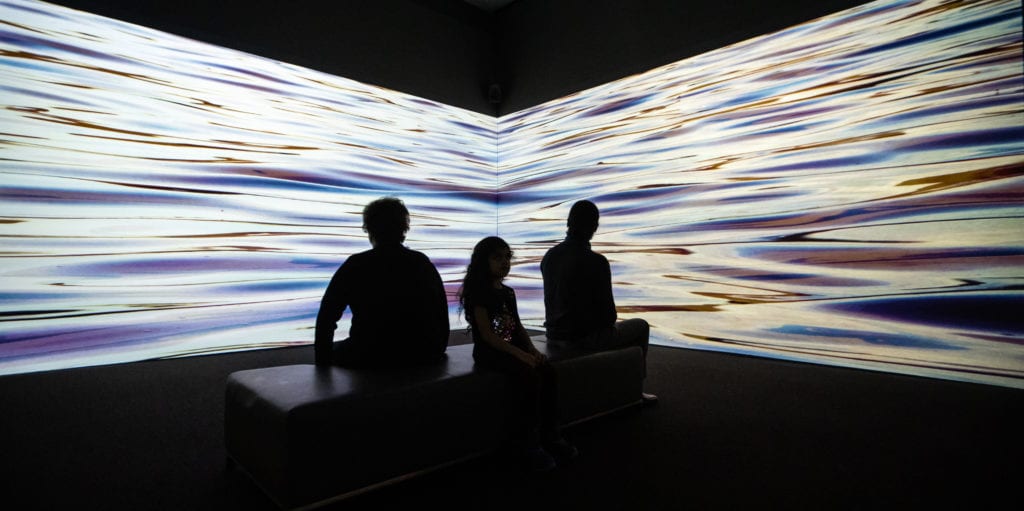
For the past year, my preparation for the American Art Incubator at Ars Electronica has been interwoven with visions of myself tracing the city’s complex history in my daily walks from Atelierhaus Salzamt to Ars Electronica — crossing the Nibelungenbruke bridge over the Danube, walking the streets, catching the aroma of fresh baked Linzer Torte. Daydreaming my month-long stay in Linz, I looked to accounts of the past and present in Austria and Linz and anticipated with excitement the city’s future, a vision that is nurtured in spaces like Ars Electronica.
With the sudden shift of this exchange to a virtual program in response to the pandemic, I am left to live the experience of being in the presence of a place and its people through the medium of technology: searching images, reading first-hand accounts, listening to Annea Lockwood’s “A Sound Map of the Danube.” These sources of information are like shattered particles of a reflection on the water’s surface, constantly flickering in and out of a vision that could be whole.
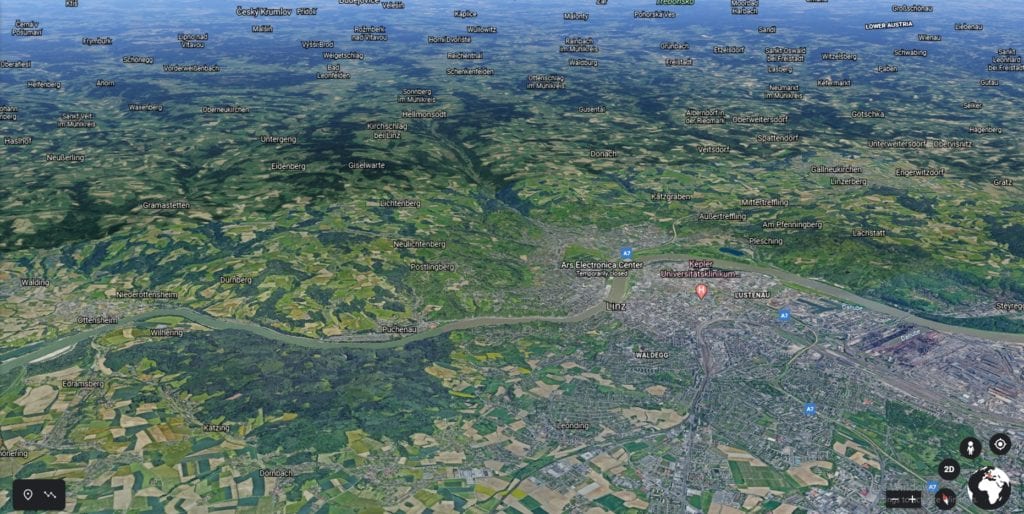
The global pandemic has impeded our ability to connect with the places and people we love, or had yet to love, in person. However, individuals and organizations have opened up a floodgate of virtual access to online content and experiences. Technology has solidified its role as the connective tissue among people from different nations within one city or across continents. On the other hand, the pandemic has also brought into sharper focus structural injustices and systemic inequities. In the field of Art and Technology, specifically, it is a call to construct equitable networks of support that center the most vulnerable.
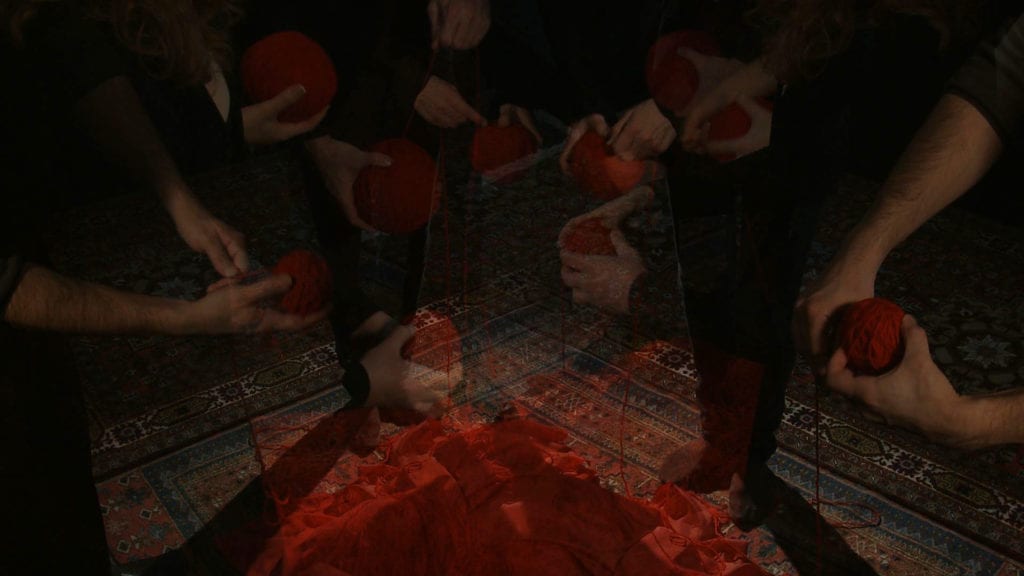
As a socially-engaged artist, I define my practice as “Art as Ecosystem,” a network of collaborations with a multiplicity of narratives that investigates social systems and animates public sites and online platforms, shifting the dominant narratives around urgent social challenges. Emerging technologies and co-creative processes form opportunities for cross-sector collaborations centering on personal stories. In this act of storytelling, the personal political realities of intersectional issues such as race, gender, immigration, and class become fluid. From this place of fluid holistic narrative, “Art as Ecosystem” arises.

My research for the past four years has been centred on “A Father’s Lullaby," a community co-creative project that uses poetic aesthetic as its critical lens to address the social challenges of mass incarceration in the United States. The project highlights the role of men in raising children, and their absence due to racial disparities in the criminal justice system. The work moves across multiple platforms, engaging people from a spectrum of experiences — from formerly incarcerated men to fathers that are federal probation officers. Co-creation engages diverse groups of participants that are mobilized by the moral responsibility of everyone to speak out on social injustices, not just those most impacted. The result of collaborations and tool-sharing workshops manifest as site-responsive installations shared in the community where it was created.

Pedagogy is intertwined with my artistic practice. As an assistant professor at Emerson College, I implement community co-creation methodologies in shaping classrooms. In the spring of 2020, my “Immersive Storytelling: Co-creation of VR and 360 Video” class brought together formerly incarcerated fathers, probation officers, and students. With the mid-semester shift to online academia, the collaboration relied on virtually using Augmented Reality and tools accessible to the fathers- their cellphones. The result of these collaborations, “From Father, With Love” is a set of postcards, each augmenting a father’s story through audio, visual, and 3D images.
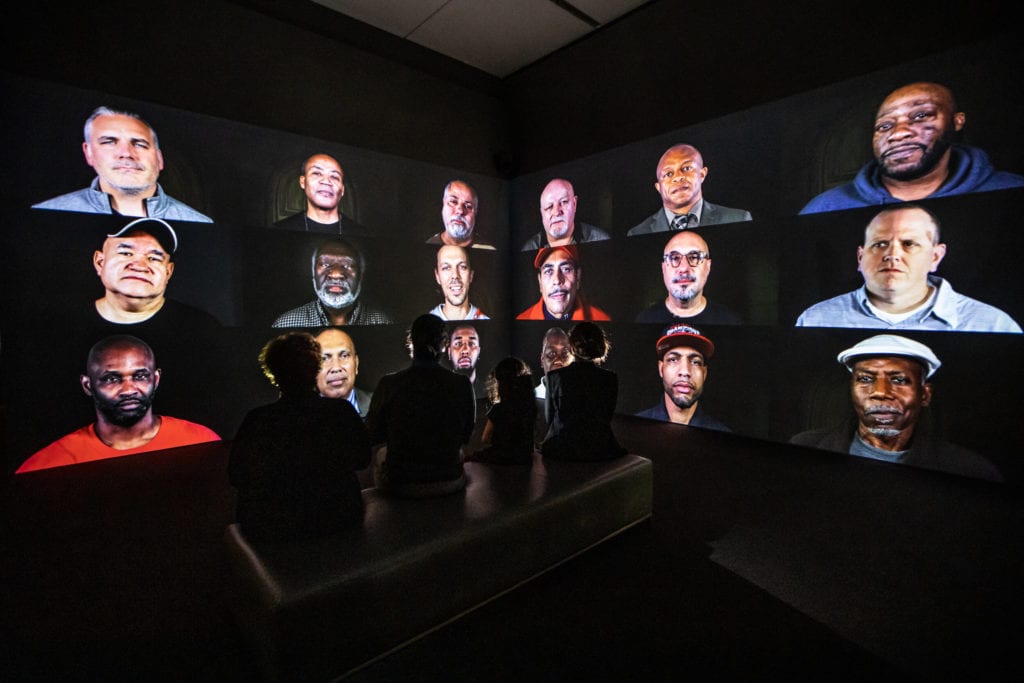
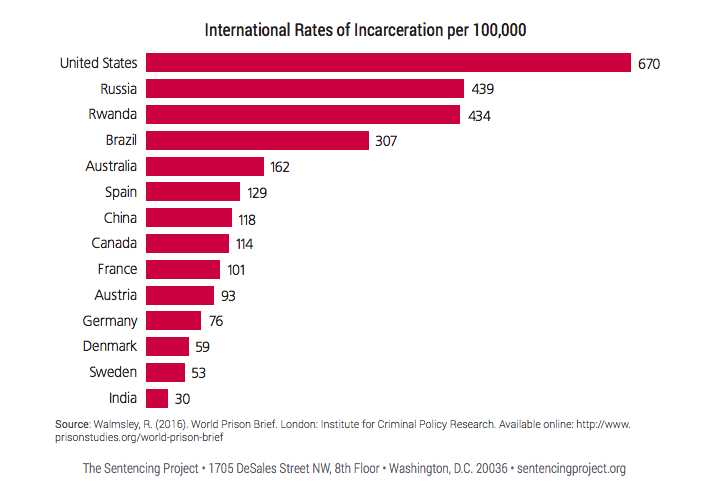
“Diversity gives me a seat at the table, inclusion allows me to have a voice at the table, but equity gives me the ability to run that table.”
DeAnna Hoskins, the president of Just Leader USA.
Partnering with Ars Electronica, an international hub for “experimentation, evaluation and reinvention” in art, technology, and society, presents a unique opportunity to envision radical changes to address critical questions of inclusivity, equity, and sustainability with underrepresented creators at the table. What are the conditions that need to be in place for equitable practices to stay sustained? Our collective efforts with local participants, leaders, and Ars Electronica is an incubator for these inquiries. With only a virtual presence, what are the effective ways to lean on the expertise and lived experiences of local collaborators, Ars staff, and community members? I am excited to work through the many questions collectively to imagine the future of inclusivity together.
Source: designboom (“john craig freeman invites us to virtually visit the wet market of wuhan in augmented reality.” May 29, 2020.)
through the emergent technology of augmented reality, artist john craig freeman invites viewers worldwide to virtually visit the wet markets of wuhan — the place where COVID-19 is believed to have originated. in the development of the transformative, at-home installation, the artist makes use of an immersive portrait of wuhan he had taken in 2016. now, remote visitors might walk through a full scale projection of the market. freeman introduces this experience as a continued body of public work that reveals where the forces of globalization are impacting the lives of individuals in local communities. the work seeks to expand the perception of ‘public’ by exploring how digital networking transforms a sense of place. experience the augmented ‘wet market, wuhan.’
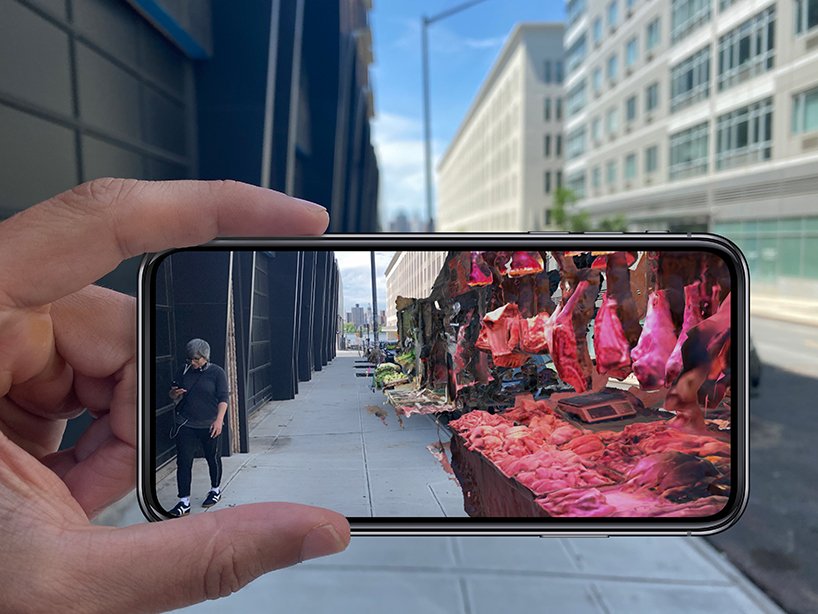
during the development of the augmented reality project ‘wet market, wuhan,’ artist john craig freeman traveled to the city of wuhan in 2016. the trip was part of the U.S. state department’s cultural diplomacy program, ‘zero1 american arts incubator.’ the project serves as a part of an extensive body of work which documents the rapidly changing city and sheds light on the complex and nuanced historical culture it holds. today wuhan has become a household name as the epicenter of the COVID-19 pandemic. together with virtual technology and freeman’s unique work, audiences have the opportunity to immerse themselves in the historic area.
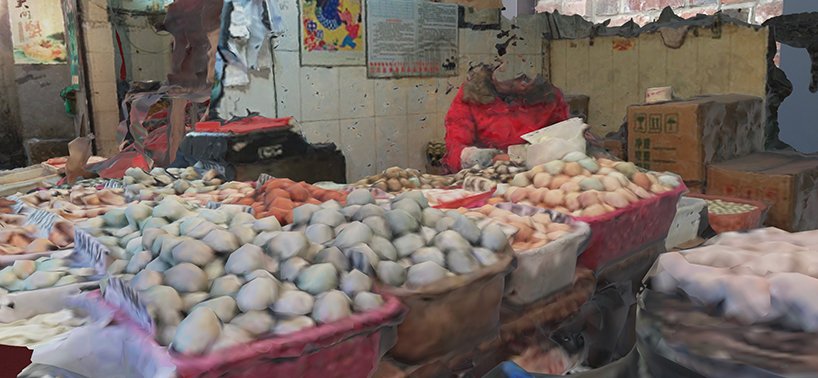
to capture the desired augmented reality vision of the wuhan wet market, john craig freeman makes use of a process called photogrammetry. with this strategy, the artist stitches together thousands of individual images into one single three dimensional file. the resulting portrait explores the boundaries between realistic portraiture and expressionist representation. the artist explains that his work focuses on capturing a singular moment in time and does not wish to participate in the current political accusations of wuhan as the target of public health failings. freeman comments: ‘using this ancient city and its local customs as a political cudgel does nothing to solve the problem caused by the threat of global pandemic. only science can solve these issues.’
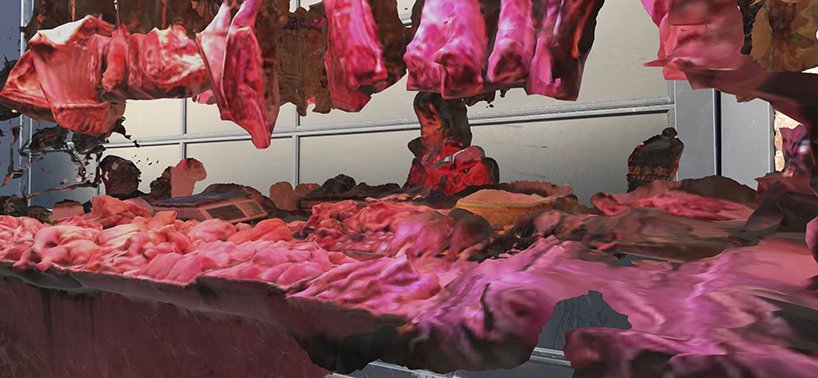
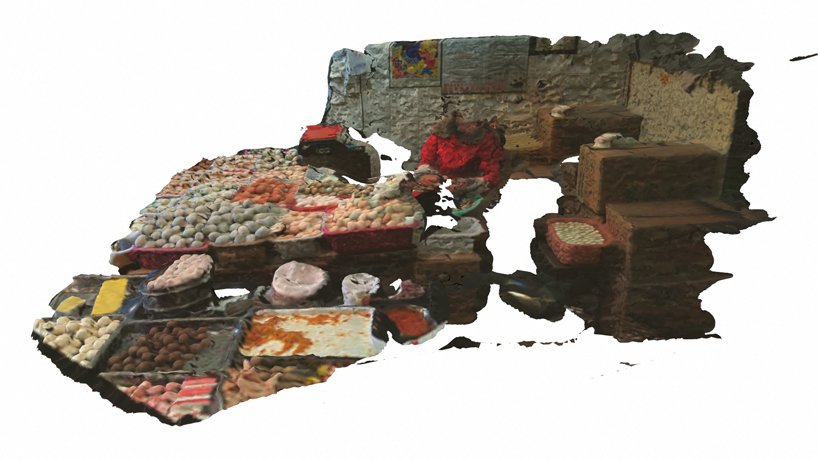
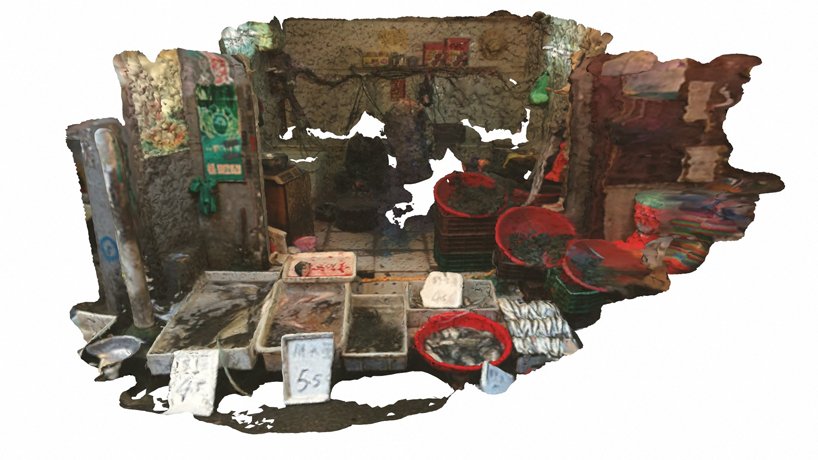
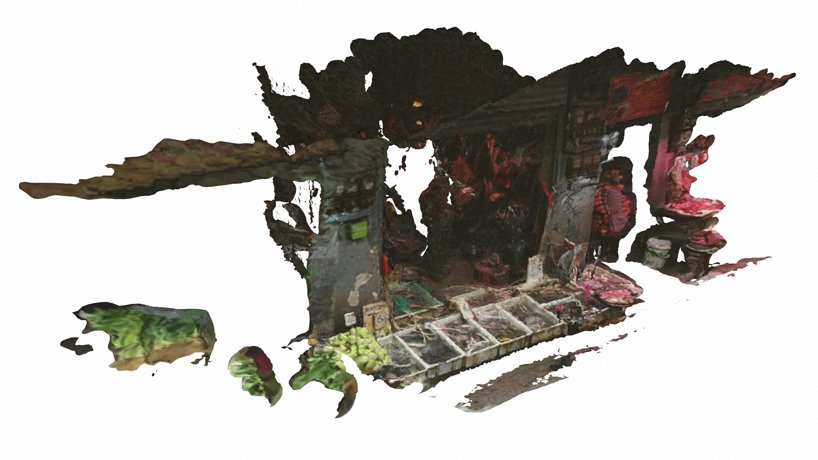
project info:
project title: wet market, wuhan
artist: john craig freeman
platform: allworld.io | @allworld.io
Open call announcement for Laboratorio en las Fronteras.
On April 19, 2020, I was supposed to be giving an Artist Talk at the Museo de Arte Moderno in Barranquilla, Colombia to kick off my American Arts Incubator exchange, Laboratorio en las Fronteras (Lab at the Borders). In the global urgency of lockdowns, quarantines, and travel bans, that talk will not be happening. My body will not go to Colombia. But perhaps we can overcome the obstacles of disease, geography, language and culture. Perhaps we can leverage available technology to do something meaningful inside the constraints of pandemic culture.
In a crisis, artists always go to work.
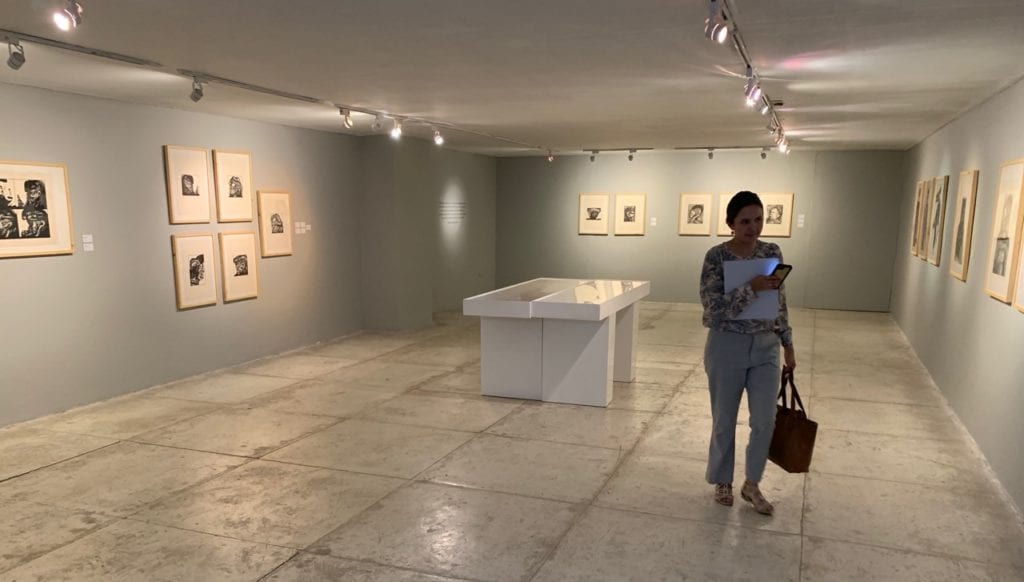
I’ve been attempting to learn Spanish online with a tutor from Colombia and my Babbel app, plan workshop rituals, sharpen the curriculum, visualize how we could possibly co-create a multi-generational interactive media exhibition reflecting the multiple identities of migration, displacement, and statelessness. Can we possibly create a virtual creative lab without any in-person connection and interaction? Who am I to think that we could move this experience online and actually incubate projects that will explore the lived experience of diverse communities at the border, contribute to peace-building, protect human rights workers and vulnerable refugees, and rise up the stories of those so frequently silenced?
I do think that something meaningful and beautiful will come of this. We just can’t possibly know what it is right now. I do know it is very important to be present in the unknowing.
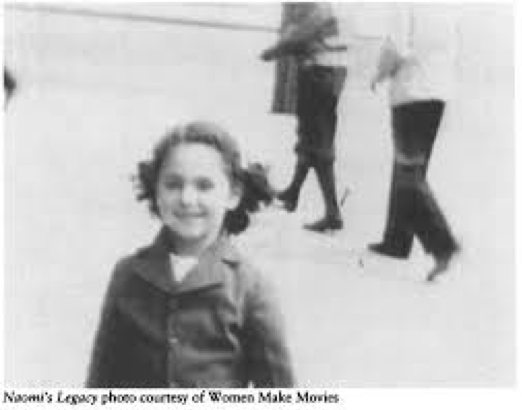
Today, I have the feeling that I’ve been preparing for this moment my whole creative life. At Oberlin College, I completed an independent major in Ethnopoetics. As a young filmmaker, I worked a lot in re-articulating and re-photographing home movie footage into new and unexpected narratives. My film that went to Sundance in 1994 was a collage of found footage and voiceover, an essay on my own infertility. It was my Saturn return, and I needed to discover who I was. Now, as a facilitator, project director and educator, a quarter of a century has passed, and I’m working on my own invisibility.
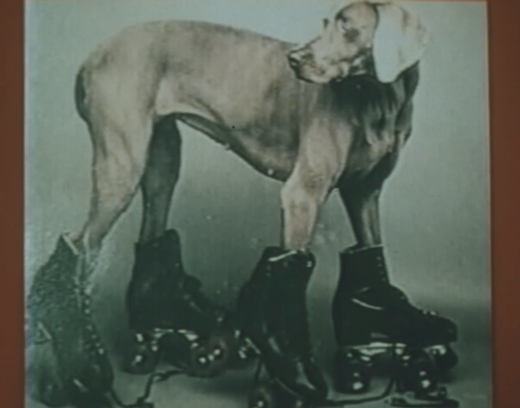
At some point in my creative practice, I turned away from making my own projects and became a visual, human-centered ethno/futurist obsessed with the intersections of celluloid, pixels and codecs, and the social and cultural implications of the transition from analog to digital to virtual – especially in documentary.
Leading the Producers Institute, the first new media lab in the U.S. for documentary filmmakers and journalists, I could see up-close the power of having artists, technologists and activists together, co-creating from day one. Those labs (at the Bay Area Video Coalition in San Francisco) worked because we were together for ten endless days and nights.
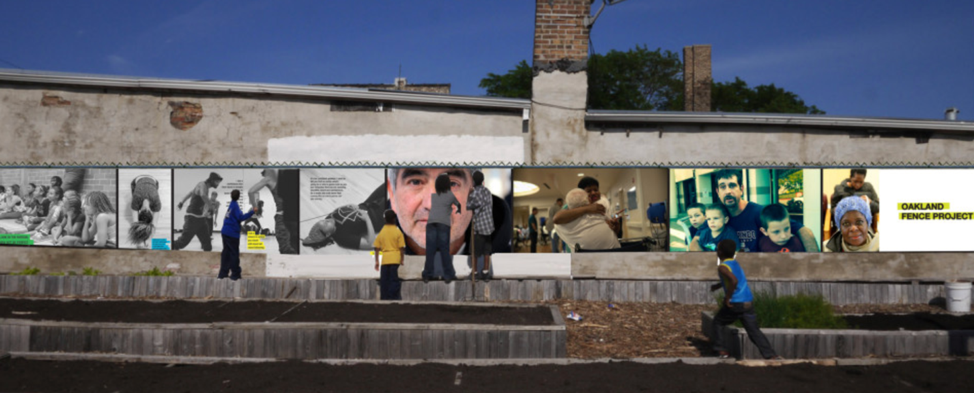
A few years later, directing the Oakland Fence Project, we created one of the first story-based A/R apps that enabled the subjects in still images to speak, to “come-to-life.” That technology augmented 5-foot photographs with stories and voices rarely heard.
It is in this space that the vision for the work will emerge. I know it.
Photo by PedRodarte is licensed under CC BY 2.0.
I’m writing this blog post in the midst of final preparations for my journey, as I leave wintry Chicago en route for summertime in Belo Horizonte, Brazil! This will be my very first trip to Brazil, and my first ever visit to South America. I’m excited to meet the partners on the ground, get settled in, and make some waves with the 25 participants we selected for this Incubator. We’ve chosen an extremely talented and diverse cohort of artists, technologists, and architects from within Belo Horizonte to participate.
For this implementation of AAI, we’ll be addressing the social challenge of economic inequity through a workshop series I’ve developed for this entitled — “Augment Earth: Embedded Futures,” where we’ll be creating extended reality portals around the city as a generative seed of discourse for equity and collective futurity.
As an artist and architect based here on my ancestral lands, my practice revolves around notions of Indigenous Futurism and its tangible manifestations. I recently contributed to the Chicago Architecture Biennial, where I was invited as their first Native American architect. I created a projected augmented reality installation of a burning hut entitled, “Hayo Tikba (The Fire Inside)” dedicated to Indigenous mound building civilizations and their living descendants that were forcibly displaced in the creation of virtually all U.S. cities east of the Mississippi River.
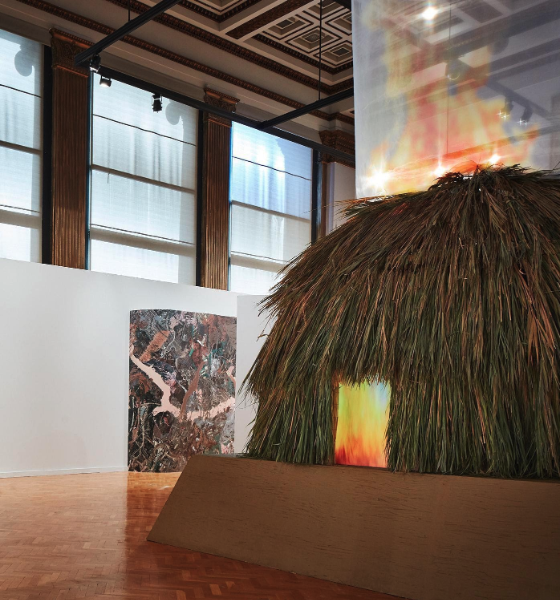
I’ve also been conducting recent explorations in holographic reanimations of ancestral craft, like in my installation “Transmissions,” populating galleries and institutions in different applications referencing the different forms of Indigenous craft respective to geographic location.
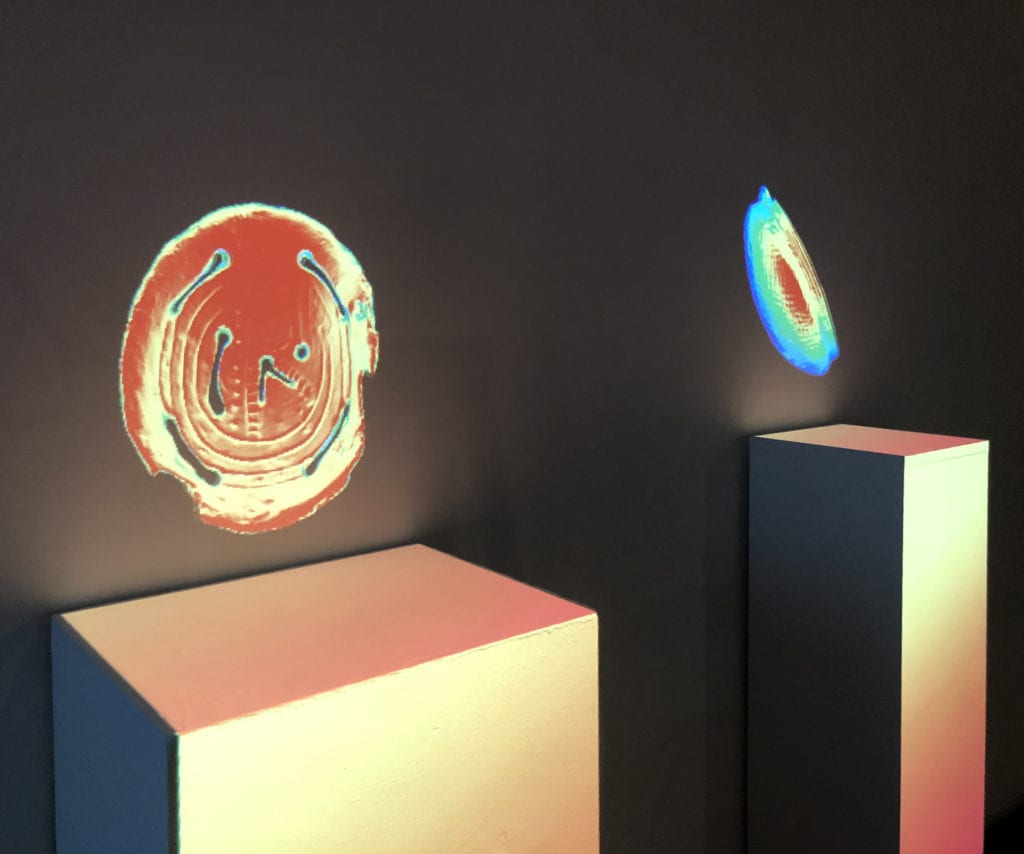
For this series of workshops in BH, I’m really looking forward to activating portals throughout the city: portals of thought, experiential interactivity, knowledge, and hope through the many narratives and talents of our group.
Our incubator will culminate in an open house and panel discussion where we will activate portals in and around our host site, the Banco do Brasil Cultural Center of Belo Horizonte, alongside our host partners JA.CA and U.S. Embassy Branch Office Belo Horizonte.
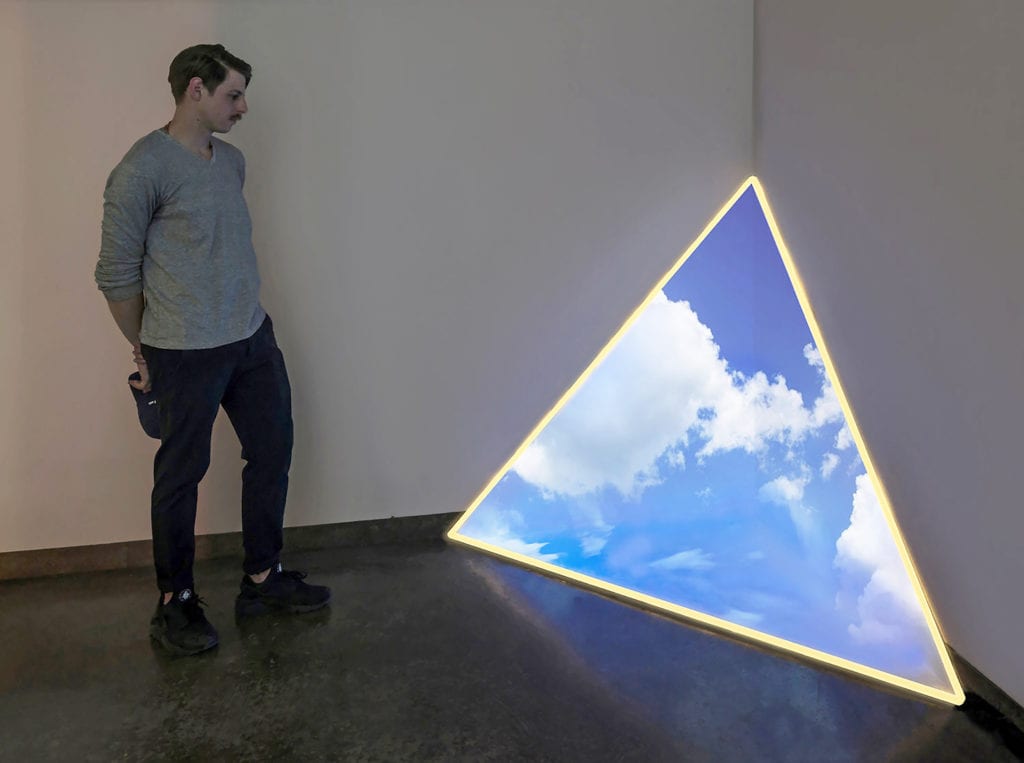
Santiago X's incubator will take place from March 12 - April 4, 2020 with support from JA.CA and U.S. Embassy Branch Office Belo Horizonte.
I first visited Kyiv Ukraine in 1992, the first year of Perestroika, and again in 1993. I met Ukrainian artists in New York City by chance during an open art studio day in Brooklyn, and one of the artists I met was from Kyiv. She spontaneously invited me to visit her hometown, saying she would set me up with a place to stay (this was pre-AirBnb), and connect me with all of her artist friends.
I instantly made plans to go to Kyiv.
What I discovered was a strong community of creative practitioners who all seemed to know one another. Their network was wide, and extended into all the major cities of the former Soviet Union, as they had all attended school together. Their art practice was both conceptual and tactile, encompassing the plastic arts, i.e. painting, drawing, batik, metal, ceramics and sculpture. Though they were resource-poor, they were conceptually rich, and the fact that I was an artist from America intrigued them.
Now, 27 years later I am returning to Kyiv to work with Ukrainian artists, but this time around themes of artificial intelligence and art. It’s quite a leap in creative techniques since my previous visit. What is new is that Ukraine is rich in a new type of natural resource – computer programmers. According to a study by Deep Knowledge Analytics, taken from a database compiled by Clutch.co, Ukraine has the most outsourcing companies in artificial intelligence in both Eastern and Western Europe. The authors of the Deep Knowledge Analytic report also cite LinkedIn as listing more than 2,000 companies who develop AI related platforms.
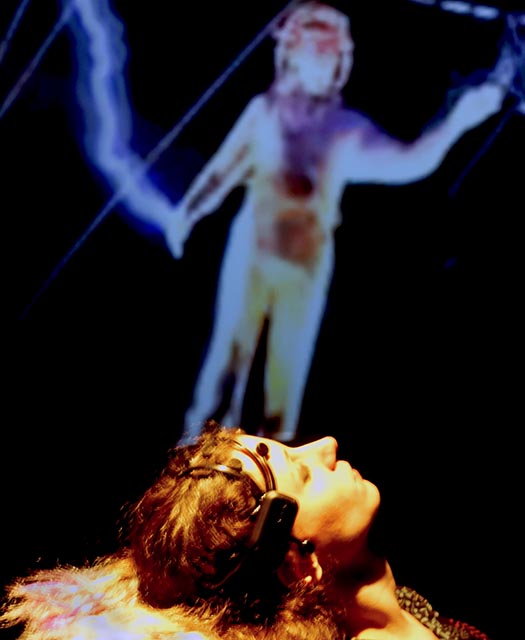
This dovetails with my current arts practice, as I work with biometric indicators (brain computer interfaces) as well as AI. I created “Noor,” a fully immersive interactive brainwave opera, as well as “AIBO” an emotionally intelligent AI brainwave opera. I am also a Director of an high-end art and technology residency in New York called ThoughtWorks Arts that works with cutting-edge technologies such as cyborgs, illegal harvesting of genetic data, breath and virtual reality, facial recognition and AI, movement and robotics, volumetric filmmaking, blockchain and AI, as well as synthetic media. In addition, I run Art-A-Hack ™ a creative group collaboration that brings artists and technologists together to "make something new." The groups contain experts as well as non-experts, and it is this methodology or toolkit I will use when working with Ukrainian artists.
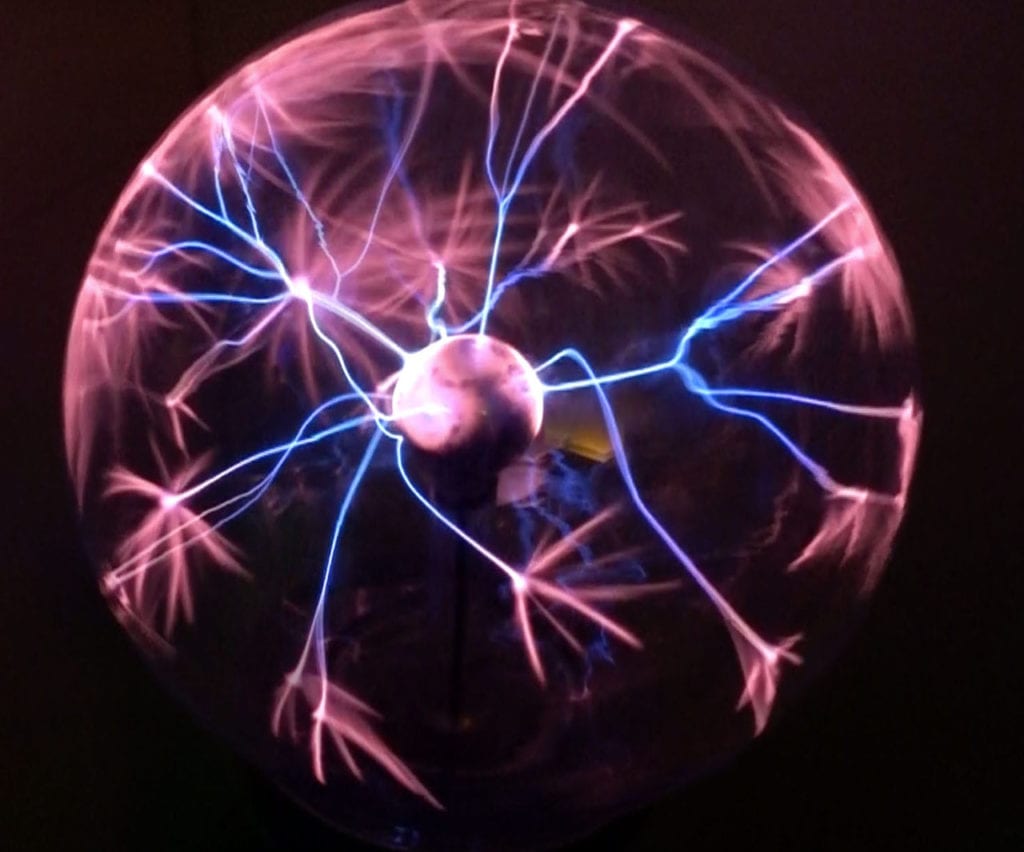
My host organization IZOLYATSIA is finding participants such as creative technologists, as well as artists both from Kyiv and outlying Ukrainian cities at their new location in Kyiv. IZOLYATSIA “orientates its activity toward the new Ukrainian generation that is involved in the creative and cultural sectors. We will work together to create projects on “Digital Literacy and New Horizons in AI and Art.” I am very interested to see the unique Ukrainian perspectives on technology and art.
Ellen Pearlman's incubator will take place from April 2-25, 2020 at IZOLYATSIA with support from U.S. Embassy Kyiv.
National Museum of Kosovo. Photograph by Bujar Imer Gashi - Own work, CC BY-SA 3.0, https://commons.wikimedia.org/w/index.php?curid=30814712
In a few weeks, I will be arriving in Pristina, Kosovo on the somewhat magical-feeling, transient leap year day, February 29th. That most of my travel from Pittsburgh, PA falls on this day will amuse me as I prepare for my month of leading workshops in youth empowerment to a group of Kosovar artists, makers, and dreamers.
When I was given my American Arts Incubator assignment, all that I knew about Kosovo was that there had been a war in 1999 while I was in my last months of high school. I asked around to my contacts to see if anyone had ever spent time there. Two people said that they had. One scolded me for my post about hoping to find moments of lightness and joy with the communities, even 20 years after the war. The other, a photojournalist who had also been there during the war, remembered her translators fondly as generous women who she kept in touch with as they married and had children. Her recollections of generosity and friendship from the people of Kosovo are what I am looking forward most to experiencing soon.
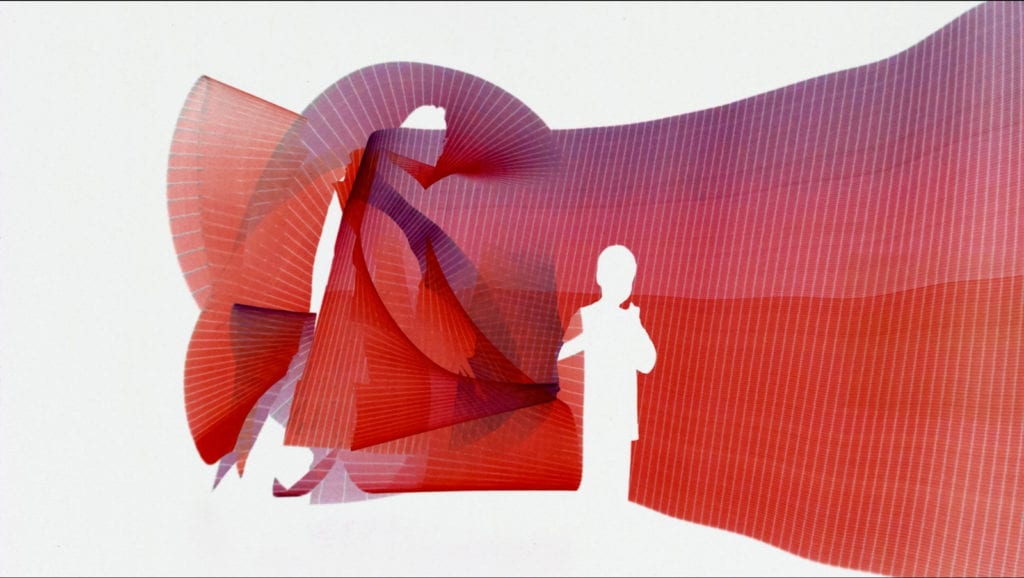
When I said moments of lightness earlier, I used the term intentionally, as much of my own art practice has used LEDs to show my bodily gestures with images and text in real time performances with projections; in other words lightpainting. The workshop that I will be conducting in Pristina, Tracing Pathways: Youth Movement, Light, and Wearable Technology, will lead participants in creating wearables with custom sewn LEDs that will be used in creating real-time projection pieces that can also trigger augmented reality animations and videos. After learning some of these techniques from my practice and discussing what youth empowerment means for them, the participants will be breaking into four groups to develop community-centered projects that will continue after my own departure.
I started working with LEDs in an early investigation of digital identity that merged lights, movement, and code in the days when Twitter couldn’t embed images. The investigation has grown and morphed beyond my initial expectations as a photographer and into my current practice. It now contains real-time projection, putting me in front of the camera, as well as setting up performances for others as a part of community-engaged, public art workshops.
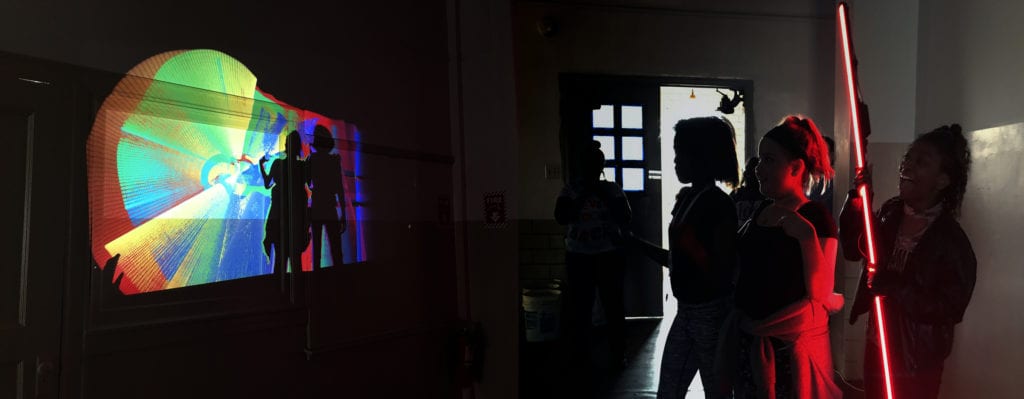
My practice now uses wearable LEDs, real-time projection, 6’ tall light sticks that look like something out of Star Wars, as well as contains community participants in public art workshops who wouldn’t necessarily consider themselves artists. The expansion of my individual, studio-based practice started when I started calling myself an artist, rather than just a photographer, even though I had always used performative means within my photography.
I am now designing systems and workshops to facilitate the joy that I feel when expressing my emotions through movement and light by allowing others to have this same magical experience that the technology facilitates. Community-centered public art has become an outlet where facilitation becomes collaborations with communities where we are all essential to the creation process, which often leads to unexpectedly joyful outcomes. I’m looking forward to my time in Kosovo and to see where some lights can take us.
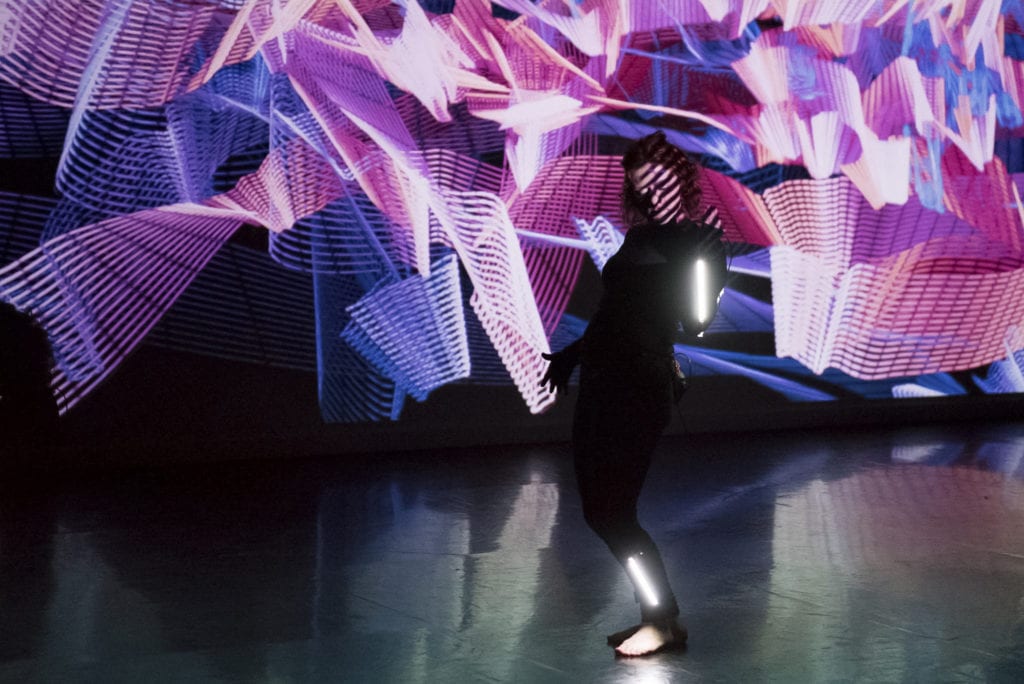
Lori Hepner's incubator will take place from March 6-29, 2020 at the National Museum of Kosovo with support from U.S. Embassy Pristina.
At the end of May, I completed my ZERO1 American Arts Incubator exchange in Pachuca, hosted by CITNOVA. I arrived in Mexico City a few days prior to the beginning of my exchange, where I spent five days exploring museums, historical and cultural sites, and learning as much as I could about Mexico’s largest city before departing to Pachuca which is situated approximately 2 hours north in the state of Hidalgo.

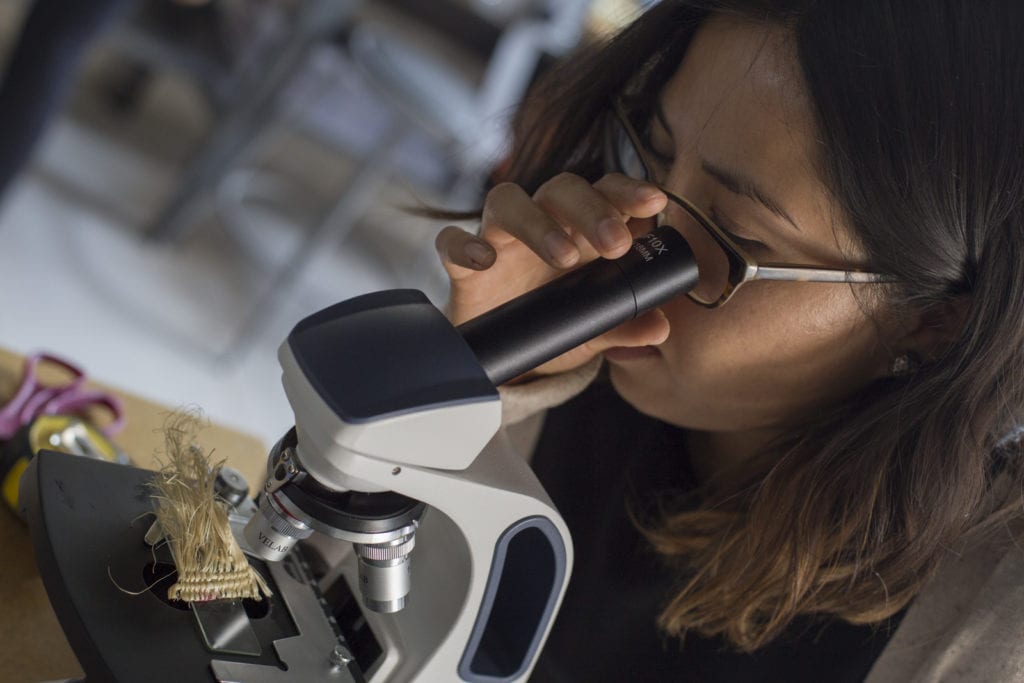
After the opening ceremony, the participants and I hit the ground running with four workshops. The workshops explored technical skills such as 3D printing, 3D scanning, laser cutting, and wearable electronics. All technical skills were framed within the context of considering how these technologies and processes could be used to create works and experiences that were rooted in narratives surrounding cultural identity. Through spending in-depth time together at the beginning of the program, I learned about the personal histories of each participant and the rich diversity of the group.
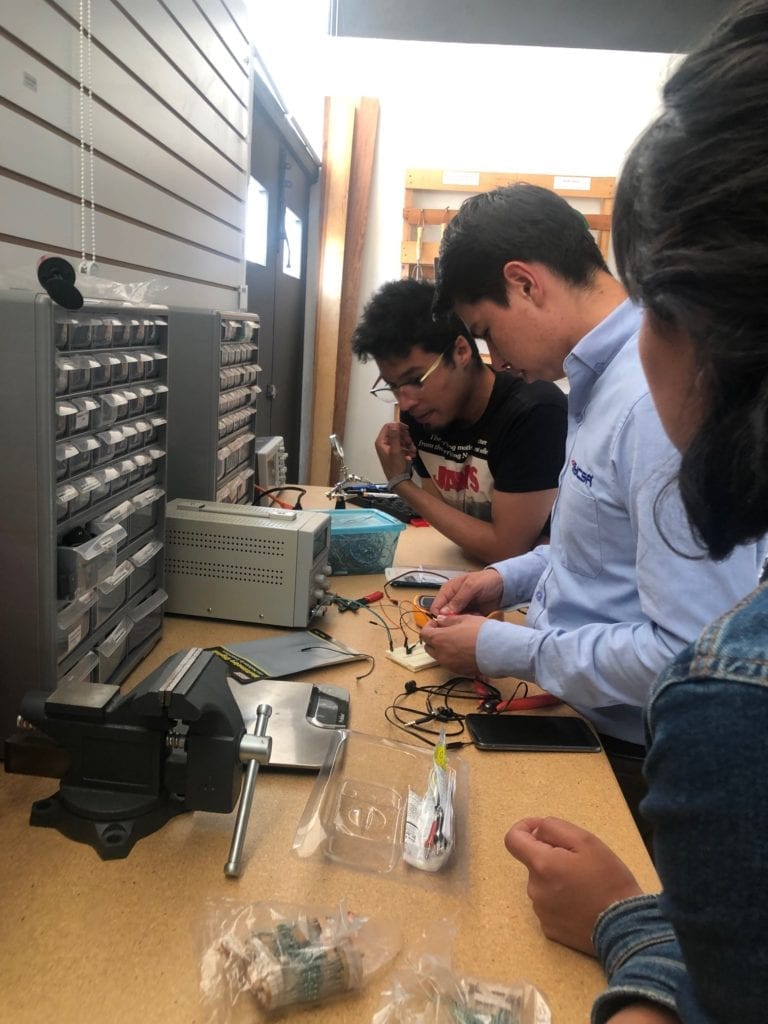

Upon arrival in Pachuca, I was greeted by CITNOVA with a fantastic opening ceremony for our program. In attendance were representatives from the U.S. Department of State Education and Cultural Affairs, as well as local government officials and other community members. It was a great way to start our experience and the first day for me to meet the participants and learn more about Pachuca.

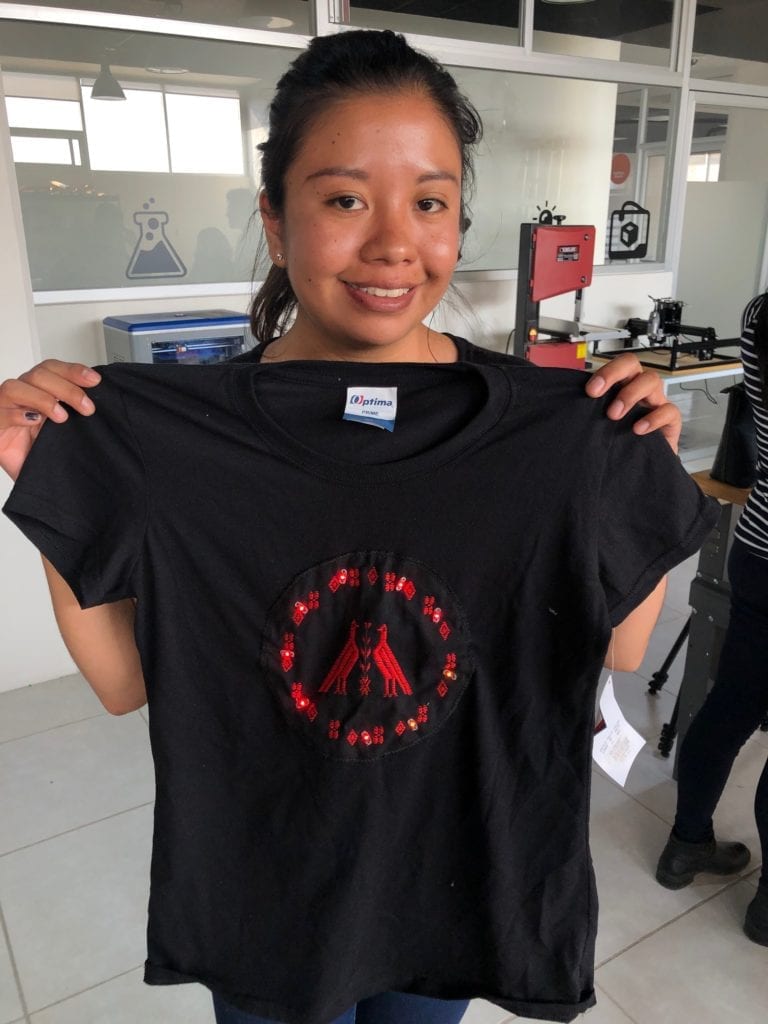
As part of our creative research, we visited several sites in the greater areas surrounding Pachuca including Las Prismas, Atlantes de Tula, local mines, and magic towns such as Huasca and Real Del Monte. Participants used this time to gather 3D data, take video and images for their final prototypes, and gain deeper knowledge to share as part of their final pieces. We also had the pleasure of meeting with art and technology residents visiting from all over the world as part of the local Fronda Arte residency program.
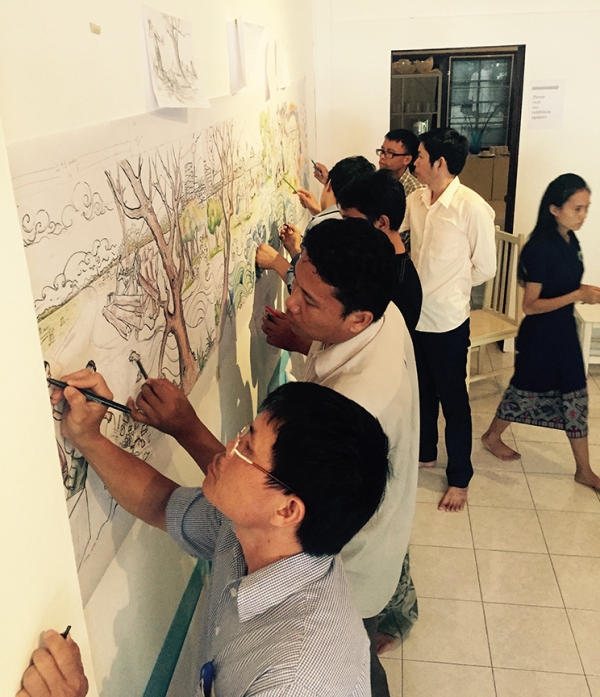
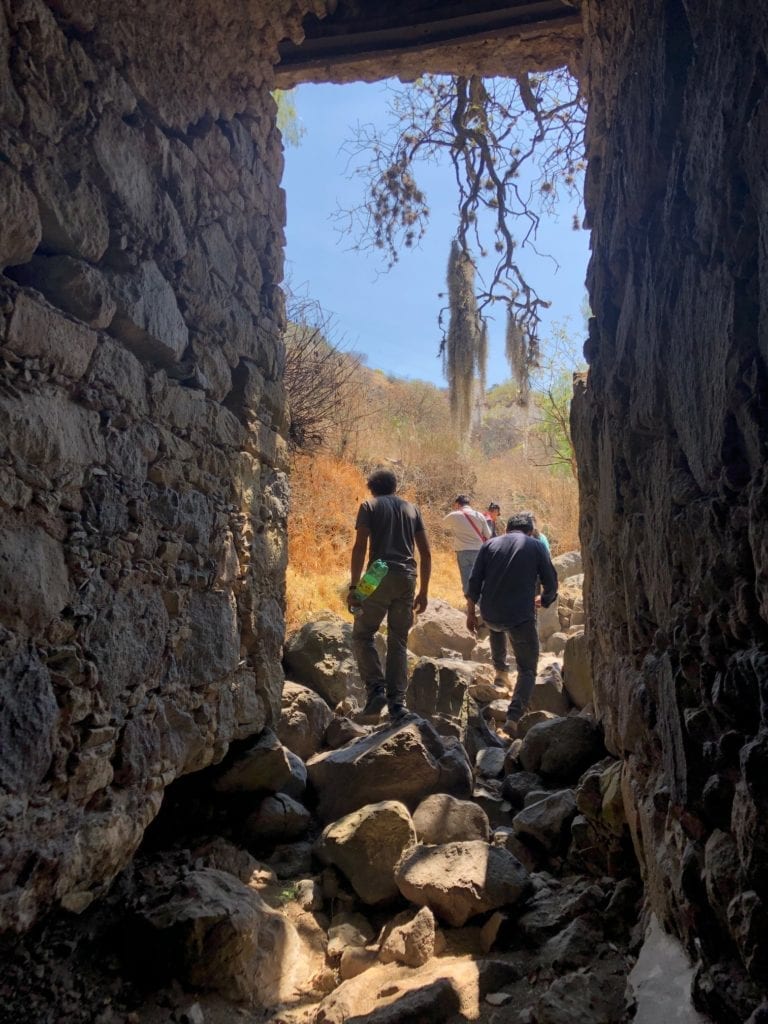
The resulting prototypes were exhibited at CITNOVA where participants shared their ideas with guests panelists and visitors through an Open House. I was incredibly proud of the ideas and projects that each team executed given the brief period of time to learn and absorb a large number of new processes, tools, and technologies.


Personally and professionally, I was blown away by these participants who had a deep knowledge and appreciation for their cultural heritage, home cities, and personal histories. Being able to visit many ancient sites was a true gift, as was spending time with this incredible group of people. Our visit to Atlantes de Tula was incredibly transformative for me personally.


The participants came up with incredible ways to utilize the technical skills that we had covered, including 3D-printing bordado embroidery patterns onto fabric, which blended traditional crafts with new technological approaches. One group explored the rich historical languages present in the Pachuca area by creating prototypes that highlighted indigenous languages through AR magazines and light installations, while another created projects that were visual representations of the history of mining culture through wearable bioplastics. The final group used RFID-embedded objects to create interactive videos of the cultural sites we visited.
This experience was incredibly meaningful, and professionally shifted my approach to considering how new technologies can be used in conjunction with traditional craft in the future. Utilizing new technologies allowed complex issues like cultural identity to become more accessible to a broader public. I am fully confident that the participants from this exchange will continue to develop their prototypes. I look forward to continuing the discussion of these projects online and hope to visit Pachuca again in the future.
